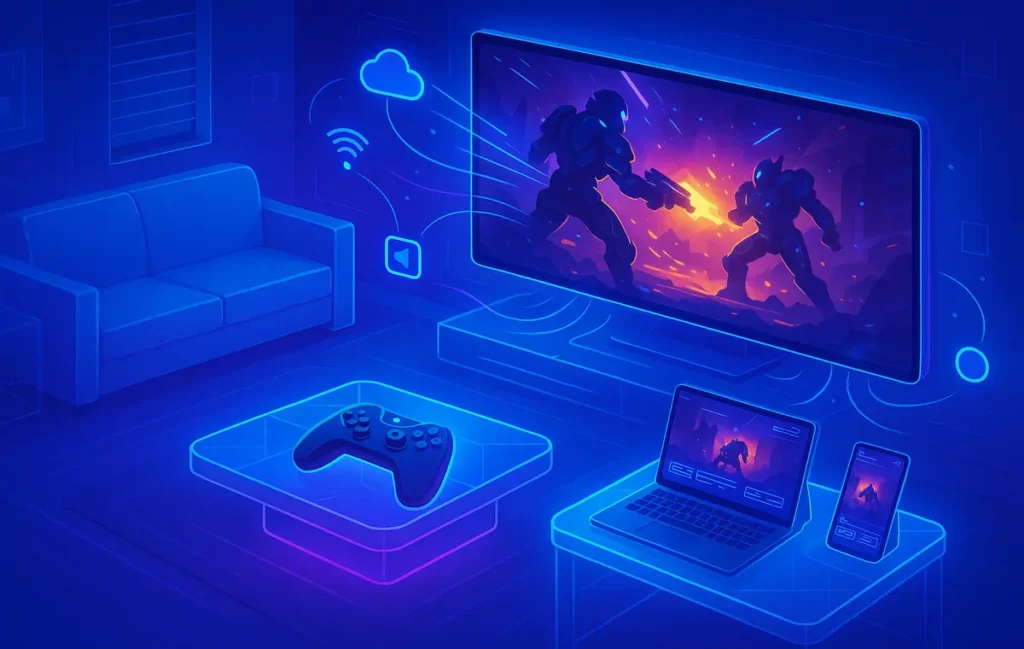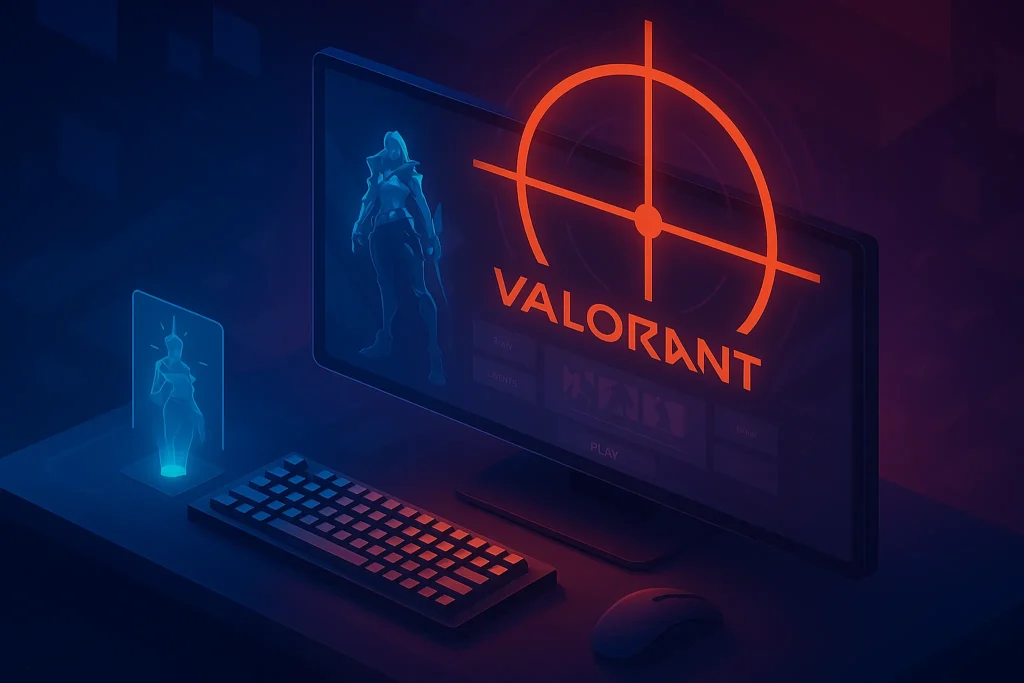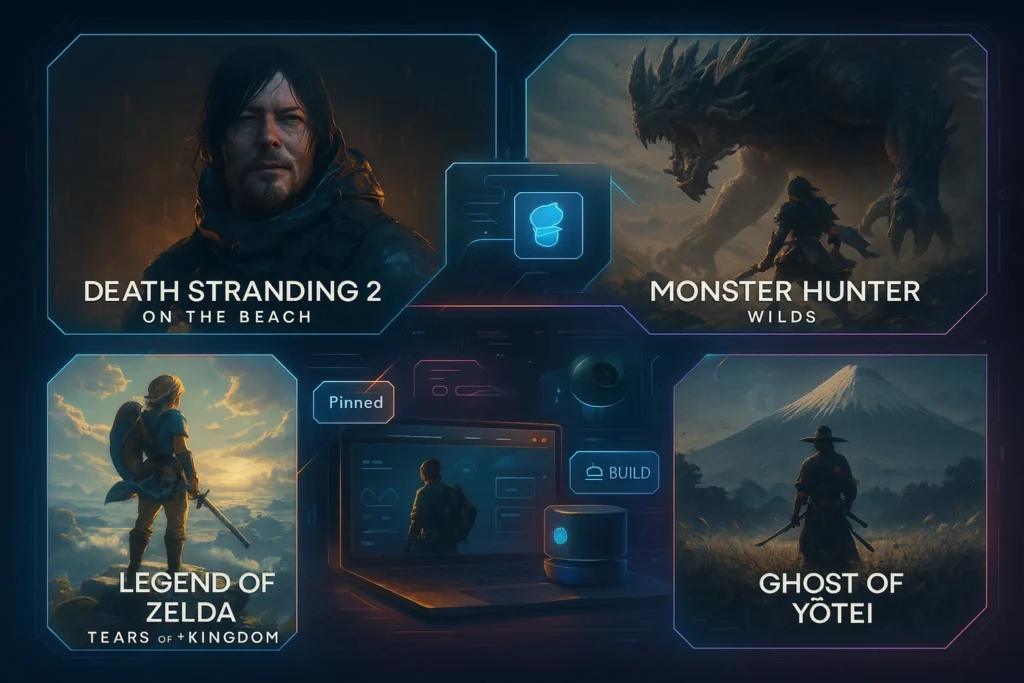🎮 Intro: Your Next “Console” Might Be a Login, Not a Box
There was a time when you needed a $2,000 graphics card to taste ultra settings and cinematic frames. Today, a fast connection and a good controller can take you most of the way there—on a phone, TV stick, Chromebook, or a low-end laptop. That’s the premise of cloud gaming: stream the power of a data center to any screen you own. You click Play and a high-end rig spins up in the cloud, rendering frames and sending you a video stream with your inputs reflected back almost instantly. For many players, it’s already good enough to replace a mid-range PC or console; for others, it’s a perfect second system for travel, dorms, or couch co-op. In this NerdChips pillar, we’ll unpack the tech, the trade-offs, the realistic performance targets, and the market dynamics to help you decide whether the next upgrade should be bandwidth instead of silicon. If you want direct matchups, bookmark Cloud Gaming vs Consoles and Cloud Gaming vs. PC Gaming; if you’re shopping, jump to Best Cloud Gaming Services for Low-End PCs and Cloud Gaming Gear.
💡 Nerd Tip: Treat cloud gaming like a new platform: test it on your network, at your play hours, with your favorite genres before you commit.
☁️ What Is Cloud Gaming—Really?
At a technical level, cloud gaming is just-in-time remote rendering. Your game runs on a GPU server in a data center; the server captures frames, compresses them with a low-latency codec, and streams them to your display. Your inputs travel back upstream. If the round trip is short and stable, it feels near-local. If it isn’t, it feels like molasses. That’s why people argue about latency and jitter more than raw bandwidth. In practice, you’ll need three things: a stable connection, a device that decodes modern codecs efficiently (HEVC or AV1), and a controller/keyboard with minimal input overhead. You don’t need a beastly PC—you need a reliable pipe.
Where it gets interesting is the business model. Some platforms include a catalog (think “Netflix for games”). Others let you bring your own library from stores you already use. Some do both. The right choice has less to do with theoretical throughput and more to do with what you play and where you play it.
💡 Nerd Tip: If your display or stick can’t decode AV1, you’ll either consume more bandwidth for the same quality or see more artifacts under motion. Hardware decode support matters.
🚀 Why Cloud Gaming Is Rising Now (and Not Ten Years Ago)
Three forces converged. Networks grew up: fiber and 5G shaved tens of milliseconds off last-mile latency; home routers added smarter QoS; and ISPs peered better with major clouds. Hardware got a codec brain: phones, TVs, and laptops ship with AV1/HEVC decoders in silicon, turning a tricky video stream into a battery-friendly workflow. Platforms matured: NVIDIA GeForce NOW focused on performance tiers that mimic high-end PC rigs; Xbox Cloud Gaming put instant play next to Game Pass libraries; Amazon Luna honed a lightweight catalog with Twitch integrations. Even Sony’s broader push into cloud for PlayStation fans demonstrates that the leaders see streaming as more than a science project.
The biggest cultural shift is subscription comfort. After music and film, players accept that access beats ownership—as long as access is cheap, instant, and on every device. That expectation raises the bar for cloud services and accelerates adoption across casual players who won’t buy a dedicated box every cycle.
💡 Nerd Tip: If a platform offers a 1-week trial, test during peak evening hours. That’s when congestion will reveal the truth of your local route to their data center.
✅ Benefits You’ll Actually Feel
The headline advantage is accessibility. Your low-end laptop can suddenly play a ray-traced blockbuster because the heavy lifting is offloaded. No downloads, no patch days consuming your evening, no driver roulette. You open a link and you’re in. This is particularly liberating for players in shared households, travelers, students on tight budgets, and creators who don’t want to maintain two machines. Cross-device continuity amplifies the effect: start a mission on the TV, continue on a tablet in bed, sneak in a quick run on your phone at lunch.
Cost dynamics sweeten the pitch. Instead of front-loading thousands into a GPU+CPU+PSU+monitor, you amortize the experience monthly. If you only play a handful of titles a few nights a week, cloud is often more economical—especially if you already own compatible controllers and displays. And there’s a workflow bonus the marketing pages rarely mention: Instant demos. Want to see if a niche indie or a giant RPG grabs you? Stream ten minutes without the 120 GB install.
💡 Nerd Tip: For families, cloud saves sanity. One sub + multiple screens = no arguments over the “main” device. Just remember to check concurrent stream limits in the plan.
⚠️ The Limits You Should Respect
Cloud gaming’s enemy list is short but unforgiving: unstable internet, input latency, limited catalogs, and ownership ambiguity. If your connection oscillates, you’ll feel stutter just as the boss winds up a one-shot. Competitive shooters magnify every millisecond of delay; even with a stellar route, server-side rendering plus network hops rarely beats a local GPU for twitch precision. Catalogs vary: licensing means one platform may lack the specific franchises you love. And the business model debate persists—are you renting access or building a library you can carry anywhere? Platforms that support bring-your-own store mitigate the fear but don’t erase it.
Then there’s the invisible constraint: home network hygiene. A perfectly peered route won’t save you from a congested Wi-Fi channel or a roommate exporting a 4K vlog. We’ll fix that in a minute.
💡 Nerd Tip: Aim for consistent latency under 50 ms with <10 ms jitter and <0.5% packet loss for a “feels local enough” experience in most single-player titles.
🏗️ Under the Hood: What Makes a Good Stream Good
A great session is a three-part harmony: data center proximity, codec efficiency, and last-mile stability. If the platform runs GPU blades in your region, route length shrinks. If it encodes with AV1 at a low latency preset, you get higher quality per bit and fewer smears in dark scenes. If your last mile is wired or Wi-Fi 6/6E with proper channel selection, jitter plummets. Add it up, and 1080p60 looks crisp at 15–25 Mbps, 1440p60 at 25–40 Mbps, and 4K60 at 45–75 Mbps depending on scene complexity and preset. Frame pacing matters too: consistent delivery beats occasional spikes to 120 fps with cliffs between.
Controller latency matters. Bluetooth can add 5–15 ms vs wired. Some smart TVs add another frame of processing; Game Mode isn’t optional—it’s mandatory. On phones/tablets, heat throttling can degrade decode performance. If your session degrades after 20 minutes, it’s not always the platform; sometimes it’s your device defending its battery.
💡 Nerd Tip: Turn on “Game Mode” on TVs/monitors and disable motion smoothing. You’ll slash post-processing lag that cloud services can’t control.
⚡ Ready to Stream Smarter?
Compare platforms, test your network, and grab the right gear. Start with our curated picks for low-end laptops and TV setups.
🧪 Practical Performance Targets (So You Can Self-Test)
| Target Experience | Resolution & FPS | Latency Goal (RTT) | Bitrate Window | Notes You Can Act On |
|---|---|---|---|---|
| Casual RPG/Adventure | 1080p60 | ≤ 60 ms | 15–25 Mbps | Prioritize stability over peak bitrate; wired or Wi-Fi 6 is enough. |
| Competitive Lite (racing, co-op shooters) | 1440p60–120 | ≤ 45 ms | 25–40 Mbps | Use Ethernet if possible; controller wired; kill background uploads. |
| Cinematic 4K Single-Player | 4K60 HDR | ≤ 50 ms | 45–75 Mbps | AV1 decode support helps; HDR tone mapping must be accurate. |
| On-the-go Mobile | 1080p30–60 | ≤ 70 ms | 10–20 Mbps | Use 5G UW or strong Wi-Fi; limit notifications and background sync. |
How to measure: run a speed/latency test to the platform’s recommended city, then play at your peak hours. Log perceived quality vs numbers. If jitter spikes when someone starts a video call, enable QoS or segment traffic.
🧭 Industry Shifts: Who’s Betting on What
Microsoft anchors its cloud bet inside Game Pass. The strategy is friction: see a title, click play, stream now, download later if you fall in love. Expect deeper TV, browser, and mobile integrations and potentially hybrid models that stream while you download in the background. NVIDIA GeForce NOW leans hard into performance tiers, essentially renting you a cutting-edge PC in the sky and letting you bring your libraries from major stores. The promise is fidelity; the result is the closest thing to high-end PC gaming without owning a PC.
Sony continues weaving PlayStation cloud into its ecosystem, with a catalog approach that pairs well with high-profile exclusives. Amazon Luna survives where Google Stadia didn’t by keeping scope sane and bundling intelligently with existing Prime/Twitch habits. The lesson from early exits: cloud isn’t just a GPU rental. It’s a distribution model that succeeds when it fits existing player behavior and libraries. For geographic expansion, look to regions where mobile dominates; cross-platform logins and TV apps will be the spearhead.
💡 Nerd Tip: If your backlog lives on Steam/Epic, prioritize services that support bring-your-own library. You’ll avoid paying twice and keep continuity if you return to local play.
🧰 Home Setup That Makes Cloud Gaming Shine
Start with the boring win: Ethernet. A $10 cable beats a $300 router for stability if you can run it. If not, Wi-Fi 6/6E with DFS channels reduces interference; keep the console/TV within line of sight if possible. Turn on QoS and set your cloud platform as “high priority.” Disable or schedule heavy cloud backups during play hours. On mobile, test both 5G and home Wi-Fi; sometimes your carrier’s peering to a platform’s data center is faster than your ISP’s evening route.
On TVs, enable Game Mode and, if available, VRR (variable refresh rate) for smoother streaming. On PCs, close background updaters and set your browser/app to exclusive fullscreen to minimize compositor overhead. On phones/tablets, keep a charger handy to avoid battery-saver throttling mid-raid.
💡 Nerd Tip: If Ethernet’s impossible, try powerline adapters on the same circuit. They’re not perfect, but they crush jitter vs crowded 5 GHz in apartments.
🛒 Choosing a Platform (Library, Fidelity, or Price?)
Choosing a cloud service is less about brand loyalty and more about which variable you refuse to compromise.
-
If you can’t tolerate muddy motion or want ray-traced eye candy, choose a platform that offers high-efficiency AV1 and performance tiers that mirror high-end GPUs.
-
If you’re price-sensitive and play a wide range, a catalog-driven subscription can be absurd value—as long as it actually includes the genres you love.
-
If your games already live on Steam/Epic/Ubisoft, bring-your-own is the cleanest path; you keep purchase history and switch between local and cloud at will.
And yes, test controller feel. Some services add subtle smoothing that feels fine in story games but mushy in shooters. Your hands will know in two minutes.
💡 Nerd Tip: Before paying, run a latency test + 20-minute demo of a twitchy title and one cinematic game. If both feel acceptable, the rest is gravy.
📊 Quick Comparison Snapshot (Conceptual)
| Platform Focus | Library Model | Tech Angle | Devices | Best Fit |
|---|---|---|---|---|
| Performance tier (PC-style) | Bring your store | AV1, high bitrate tiers | PC, Mac, TV apps, mobile | Fidelity chasers, creators |
| Catalog subscription | Included games | Seamless app/TV integrations | Consoles, TVs, browsers, mobile | Variety seekers, families |
| Console ecosystem | Hybrid (buy + stream) | Controller latency tuning | Console + cloud app | Franchise fans, day-one exclusives |
| Lightweight catalog | Channel bundles | Simplicity, quick start | Fire TV, browsers, mobile | Casual players, Prime households |
For exact brand picks with current tiers and device support, head to Best Cloud Gaming Services for Low-End PCs.
🧮 Economics & Ownership: What Are You Really Buying?
A premium GPU amortized over four years can be cost-effective for heavy players, especially if you’re also using the machine for creation or work. But if you game true-casual—say 6–10 hours weekly—cloud’s operational expense often wins, particularly if you leverage a family plan. Ownership anxiety is legitimate: if a platform loses a licensing deal, your favorite title may vanish from its catalog. Bringing your own library reduces that risk; you still own the license in a traditional storefront and can download locally if needed. We expect hybrid models to spread—play instantly in the cloud while you download locally for weekends, or stream when traveling and install at home.
💡 Nerd Tip: Run a simple ROI calc: (Monthly fee × 24 months) vs (GPU/console + games you’d buy anyway). If you don’t finish many titles, subscriptions stretch further.
🌍 Regional Reality: The World Is Not a Data Center
Cloud gaming’s promise is universal, but infrastructure isn’t. In dense urban corridors with multiple peering points, it can feel indistinguishable from local for many genres. In rural areas with high jitter or restrictive data caps, the dream collapses. Emerging markets are the dark horse: an inexpensive TV plus a controller, bundled with home broadband or 5G, is a cheaper entry point than any console. Expect partnerships with smart TV manufacturers to define the next growth spurt and for carriers to bundle low-latency lanes for gaming as a differentiator.
💡 Nerd Tip: Data caps are silent killers. 4K streaming at 60 fps can chew 20–50 GB per hour depending on encoder settings. Know your plan.
🔮 Future Outlook (2025–2030): Where This Goes Next
Three trajectories look inevitable. First, interface ubiquity: more smart TVs ship with gaming-first decoders and native apps; phone makers add game modes tuned for low-latency Bluetooth and USB-C video out. Second, hybrid ownership: buy the game once, play anywhere—installed or streamed—with cloud saves syncing it all. Third, edge compute + AI: denser edge nodes cut latency, while AI-assisted encoding adapts more intelligently to motion and network conditions; meanwhile, upscaling and frame generation server-side smooth motion without crushing bandwidth. If the economics hold—power, rack density, licensing—some households will ask a startling question in 2030: Why buy a console at all?
For a broader look at platform strategy and hardware interplay, read Cloud Gaming vs Consoles and Cloud Gaming vs. PC Gaming. And if you’re assembling the accessories that make streaming sing, our Cloud Gaming Gear guide covers controllers, routers, and low-latency displays.
💡 Nerd Tip: Future-proof your next display with HDMI 2.1 and DisplayPort 2.1. Even in cloud, higher refresh and HDR tone-mapping matter.
📬 Want More Smart AI & Gaming Tips?
Join our free NerdChips newsletter and get weekly breakdowns on cloud gaming, low-latency gear, and automation tricks for players and creators.
🔐 100% privacy. No noise. Just signal.
🧠 Nerd Verdict
Cloud gaming platforms aren’t a lab demo anymore—they’re a credible primary system for millions and the perfect secondary setup for the rest. The equation has flipped: instead of chaining your fun to a heavy tower, you can anchor it to a great connection, a modern display, and a flexible library. Will it dethrone high-end PCs and consoles for competitive play? Not soon. But will it reset what “accessible gaming” means across households, campuses, and living rooms worldwide? It already has. At NerdChips, our stance is pragmatic: measure your own path (latency, jitter, peak-hour stability), align the platform with your library and genres, and then enjoy the shocking simplicity of click → play.
❓ FAQ: Nerds Ask, We Answer
💬 Would You Bite?
Given your play style, would you rather spend the next $20/month on a cloud sub—or save for a hardware upgrade?
Tell us your genres and network setup, and we’ll map the smarter path. 👇
Crafted by NerdChips for creators and teams who want their best ideas to travel the world.



